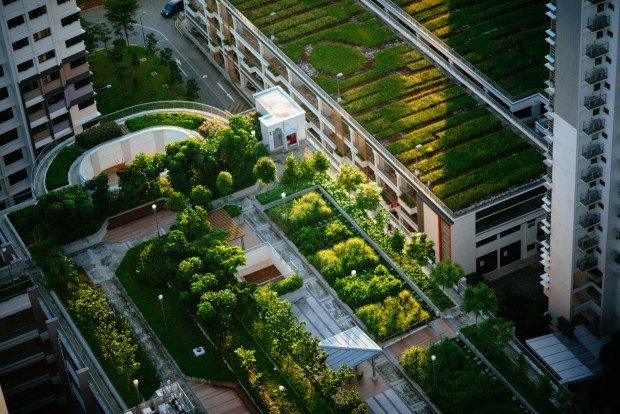As sustainable building practices become a norm in the construction industry, they serve as a vital initiative to combat carbon emissions. Nevertheless, achieving sustainability in construction aligns with environmental goals and contributes to long-term economic and social benefits for communities.

(Photo : Unsplash/CHUTTERSNAP )
1. Use of Natural Light
A practical design should prioritize the utilization of natural light to minimize electricity consumption to the greatest extent feasible. Controlling the orientation of buildings is necessary to create a thermally and environmentally comfortable environment. By optimizing the utilization of natural light in our properties, we can reduce the amount of light pollution that enters the environment and conserve energy. This factor must be considered during the initial stages of the project to optimize the utilization of solar energy, attain optimal temperatures, and maximize light hours.
2. High-quality Indoor Environment
A green building can benefit everyone who has a stake in the building, including those who live there. During the design process, every unit will provide residents with abundant natural light, panoramic vistas, and outstanding air quality. A dwelling in a sustainable development provides a noise and air pollution barrier, enhancing an individual's health and well-being. Additionally, the prevention of moisture infiltration resulting from the airtight sealing of all units against airborne contaminants diminishes the likelihood of mold or mildew growth.
3. Energy Efficiency
Among the most notable characteristics of sustainable construction is its ability to conserve energy. Every part of the building is attentive to the environment, from the smallest of actions, such as closing air ducts to prevent air leakages, to the most significant of initiatives, such as employing renewable energy sources for heating and cooling systems which produce energy via non-depletable sources such as hydroelectricity and tidal power.
Also Read: 5 Simple Steps to Build a DIY Gravel Driveway
4. Sustainable Materials
Utilizing non-toxic, recyclable, and even alternative building supplies can significantly reduce the environmental impact of building construction. In addition, buying supplies from local vendors can reduce greenhouse gas emissions during transportation. Maintaining these sustainable green structures can also be made easier with eco-friendly solutions.
5. Renewable Energy Sources
Introducing solar panels was one of the earliest and most widespread examples of environmentally responsible practices in the building and construction sector. By utilizing these renewable energy sources, the consumption of fossil fuels is reduced to a minimum. The energy produced within your shelter also lowers your monthly energy expenses. Implementing integrated solar roofs and other technological advancements has increased the efficiency of acquiring renewable energy sources over time.
6. Easy and Effective Maintenance
Designing environmentally friendly buildings does not have to be complicated. Innovative ideas, such as the incorporation of mechanical systems and smart designs, can achieve simple and efficient maintenance. As mentioned, reduced reliance on energy to control the inside atmosphere is one of the benefits of designing these shelters in accordance with their surroundings.
7. Water and Resource Conservation
Environmental sustainability does not require residing in green structures. For many years, this practice has been supported and encouraged. On the other hand, the decrease in the use of these resources occurs from when the building is constructed to when it is put into service when green buildings or houses are being created. This can also be accomplished by using water meters, water-saving faucets, or even collecting rainwater.
Related Article: Shading Solutions: Curtains' Vital Role in Sustainable Buildings







